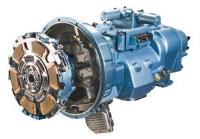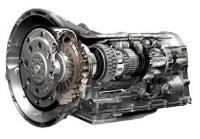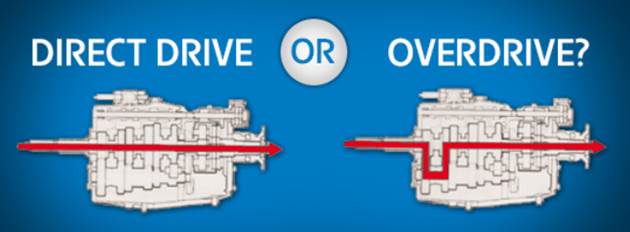
Which Transmission is Best for Your Truck?
What transmission is best for my trucking business?

Manual Transmission
A manual transmission is considered one of the best options to maximize fuel consumption when your business has skilled and tenured drivers. By definition a manual transmission functions by a driver manually selecting gears, gears select output speed for given input speed and the clutch is used to disengage the driveline.

Automated Manual Transmission
Automated manual transmission (or AMT) allows increased fuel economy with less skilled drivers. By definition an AMT is the same build internally as a manual transmission but it has a computer controlled clutch and shifter.
Drivers are an integral part of business and whether or not a truck can obtain the best fuel economy. Generally an automated manual transmission will have a 1-3% improvement over a manual configuration. There is an even larger improvement for applications requiring frequent shifting. Automated technology optimizes shift calibrations, has optional neutral coast and minimizes the need to use manual model mode.
Drivers are an integral part of business and whether or not a truck can obtain the best fuel economy. Generally an automated manual transmission will have a 1-3% improvement over a manual configuration. There is an even larger improvement for applications requiring frequent shifting. Automated technology optimizes shift calibrations, has optional neutral coast and minimizes the need to use manual model mode.

Automatic Transmission
A fully automatic transmission is ideal for vocational and non-linehaul applications and is driven by hydraulic fluid. The engine is coupled to the transmission with a torque converter and uses planetary gears thus allowing for higher parasitic losses and shifting under power. The automatic transmission takes all the guesswork out of the driver’s hands.
Overdrive vs. Direct Drive Transmission
An overdrive transmission works with a counter shaft for a reduced output speed for an overdrive ratio. Because gears are not 100 percent efficient, some energy losses are seen in the transfer of power. A higher numerical rear axle ratio (RAR) is necessary to produce a similar engine RPM that is achieved with a direct drive.
The Results: Higher Startability & Better Low Speed Maneuverability = A higher resale value due to the application’s flexibility
A direct drive transmission is straight through power flow, meaning the power is physically locked between the input and the output shaft in a 1 to 1 relationship. A direct drive requires an increase in driveline torque capacity to account for faster rear axle ratios, resulting in potential driveline weight and cost increases. Each gear mesh is a half percent to a full percent in transmission efficiency, with very little impact on fuel economy. Technically speaking, a direct drive is more efficient in top gear than an overdrive due to its ability to transmit power directly through the main shaft with minimal parasitic losses.
If the vehicle is driven in top gear on highway routes, or relatively flat ground, for 80 percent of it’s operating time, a direct drive is the more efficient option. When routes are hilly, or sometimes off-road, the overdrive becomes a better fit.
Tips for Selecting the Best Gear Ratios:
The following rules can be used for selecting gear ratios that produce the best fuel economy for customers in linehaul applications:
- The C-Ratio (73:1) is ideal for customers that require optimum startability and haul a heavier load or on frequent grades. This series is not ideal for downspeeding due to the 37 percent step down in gears between 10th and 9th.
- The S-Ratio (8:1) is ideal for trucks that encounter some hills and would benefit from the fuel economy benefits in downspeeding. This is available only on AMTs due to the small steps between the two top gears.
- The B-Ratio (1:1) is ideal for vehicles that can work in direct drive 80 percent of the operation time, with 1550 lb-ft engines or less. While the B-Ratio sees a 1 percent fuel economy improvement over C and S-Ratios, you have to weigh its benefits against increased driveline and axle costs due to higher torque requirements.

